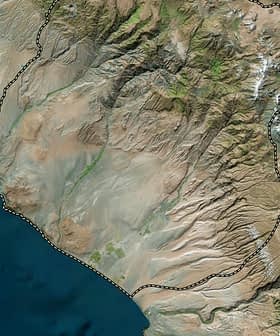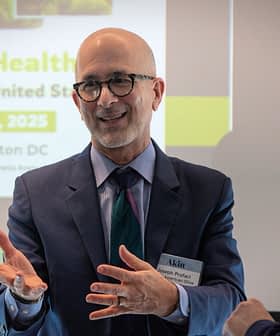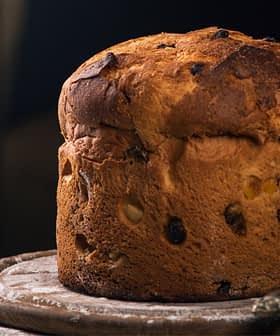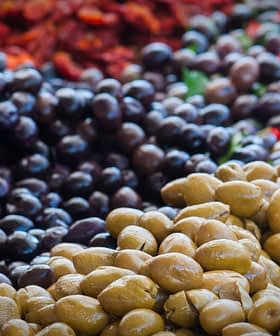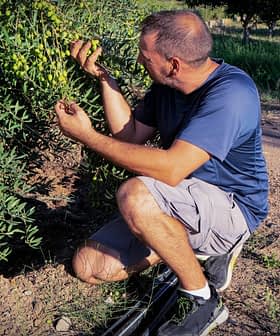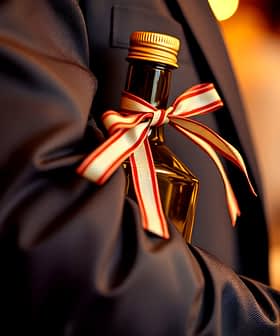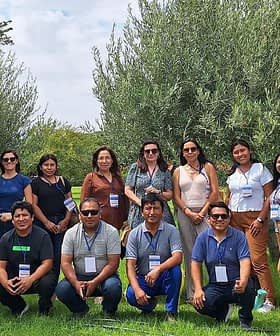Agronomist Restores 400-Year-Old Olive Grove to Better Withstand Droughts in Croatia
Restoration of centuries-old trees is the first line of defense against drought, according to one young agronomist.
 19.7K reads
19.7K readsThe Zadar County Olive Growers Association educates members and other growers, with a recent workshop held in a centuries-old olive grove on the island of Ugljan. Šime Marcelić, a young agronomist, has successfully restored his family’s olive grove on the island by implementing appropriate agrotechnical measures and regular pruning.
The Zadar County Olive Growers Association continues to educate its members and other interested olive growers.
After a short summer break, the group organized a workshop on the island of Ugljan in the 400-year-old olive grove of the Marcelić family.
“This is a typical extensive olive grove with autochthonous varieties: Oblica and Drobnica predominate,” said 29-year-old Šime Marcelić, a doctor of agronomy and owner of the family grove.
See Also:Experiment with North African Olive Varieties Bears Fruit in CroatiaThe young scientist and lover of olive growing said his ancestors worked for the landowners, saving to eventually buy back the land they cultivated after the second agrarian reform.
Ugljan is one of the many Croatian islands in the middle of the Adriatic Sea in Dalmatia, where olives have been cultivated for time immemorial. Maslinik is located on the southern side of the island, 100 meters above the sea.
“As you can see, there are stones and poor soil. The conditions are limited, so it is very difficult to work,” Marcelić said.
Drought is a perennial problem, which is why the olive grove was abandoned and rebuilt several times. Eventually, Marcelić’s late father, Ignacije, began to restore the trees systematically after the Croatian War of Independence, which ended in 1995.
Marcelić continues the work of his father. Saplings grew from the centuries-old root and developed into trees that regularly bear fruit despite the impacts of climate change and other unfavorable conditions.

Šime Marcelić
Marcelić attributed the successful revival of the trees to appropriate agrotechnical measures, starting with pruning, fertilization and protection against diseases and pests, which he regularly implements.
Unlike most olive growers, Marcelić prunes the trees four times a year. The first is in January when the olive tree is in winter dormancy. Thick branches are removed with a saw.
The second pruning is in March. The olive-bearing branches are thinned to ensure optimal yield in the current crop and quality growth for the next crop.
The third pruning comes during the summer. Weeds that grow out of the stump are removed. The fourth is during the harvest when the ringed branches are removed.
On the island, where the soil is shallow and skeletal, emphasis should be placed on autumn fertilization, Marcelić noted. In contrast to the conditions on the coast, where the soils are deep and have a good capacity for water and where the occurrence of late spring frosts is frequent and expected, spring fertilization should be emphasized.
In his olive grove, Marcelić applies fertilizer between the first summer and the next heavy rain, mostly at the beginning of September. He uses mainly organic pelleted fertilizers in combination with mineral fertilizers that have more phosphorus and potassium with the addition of microelements.
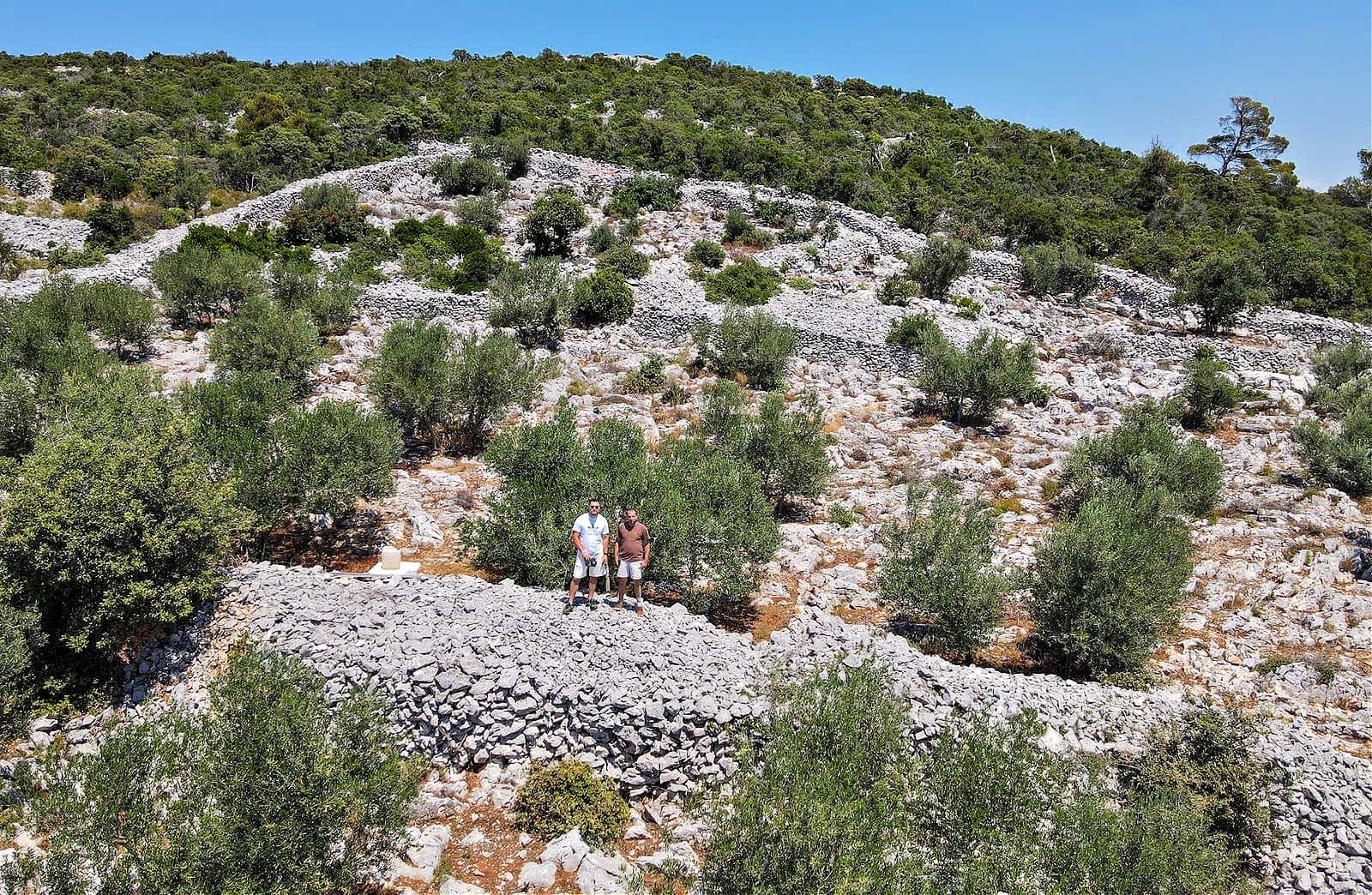
Renovated olive grove on the island (Photo: Toma Makjanić)
Marcelić also warned about the danger of infection with peacock’s eye, which is the most urgent part of work in olive groves, both on the islands and the coast.
During the autumn, after the first rains, temperatures are relatively high. Wet leaves provide the optimal condition for the development of fungal diseases, especially primary infections with peacock eye.
For this reason, Marcelić recommends that protection is carried out before harvesting, especially on susceptible varieties such as Oblica.
Applying protection after the harvest, which many olive growers do, is too late because fungal diseases have already infected the leaf. In the spring, the leaf will fall, and nothing more can be done.
The olive tree will not have enough leaf surface to develop the fruit. Instead, the tree expends its energy renewing the leaf mass resulting in less fruition.
Marcelić also explained how he overcame the drought by restoring old olive trees.
“The restoration of centuries-old trees is actually the first line of coexistence with the drought,” he said. “[It is] the measure by which we reduce the damage of the negative effects of the drought.”
A young tree with an extensive root system better tolerates the lack of moisture. Marcelić also sprays his rejuvenated trees during the summer.
He applies foliar feeding over the leaves. Little by little, he fills and levels the terrain, crushes the stone with heavy machinery and thus practically implements karst melioration.
The rain that fell last weekend was rather late, but it will help the fruits to continue developing. The final result depends on the temperatures.
“Oil accumulates from 23 ºC upwards,” Marcelić said. “The final amount of oil will depend on that and the amount of rain before the actual harvest.”
He expects his 100 restored olive trees to bear 1,000 kilograms of fruit and about 200 liters of oil.
Marcelić, who also works at the University of Zadar’s agricultural department, spends his free time helping other olive growers graft and maintain their trees.
Ivica Vlatković, the president of the Zadar County Olive Growers Association, laments that there are not more young farmers like Marcelić to restore neglected olive groves.
He contends that if more young people planted olive trees, the number in Croatia could rise from the current five or six million to the 30 million that flourished in the country during the 18th century.
Share this article



